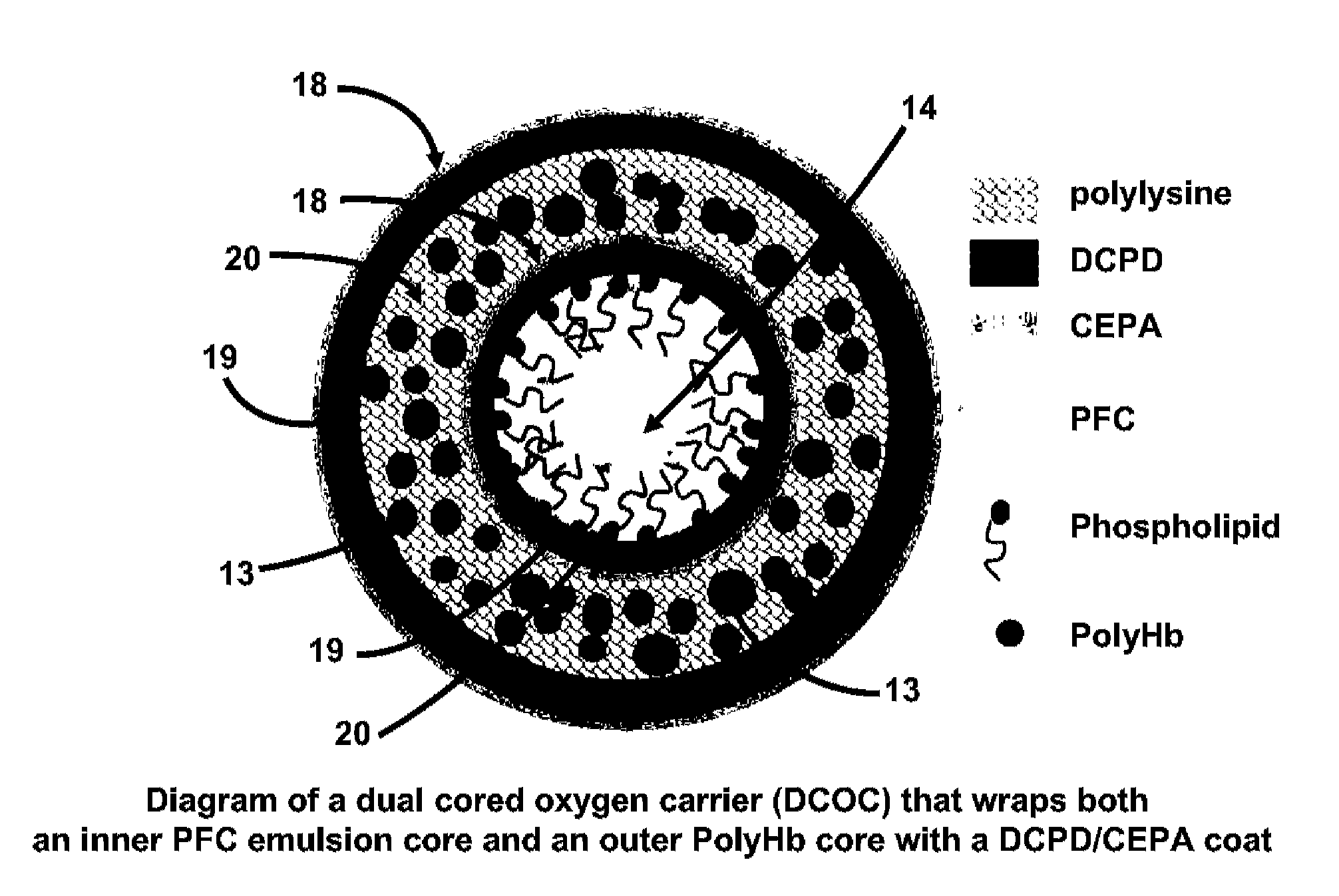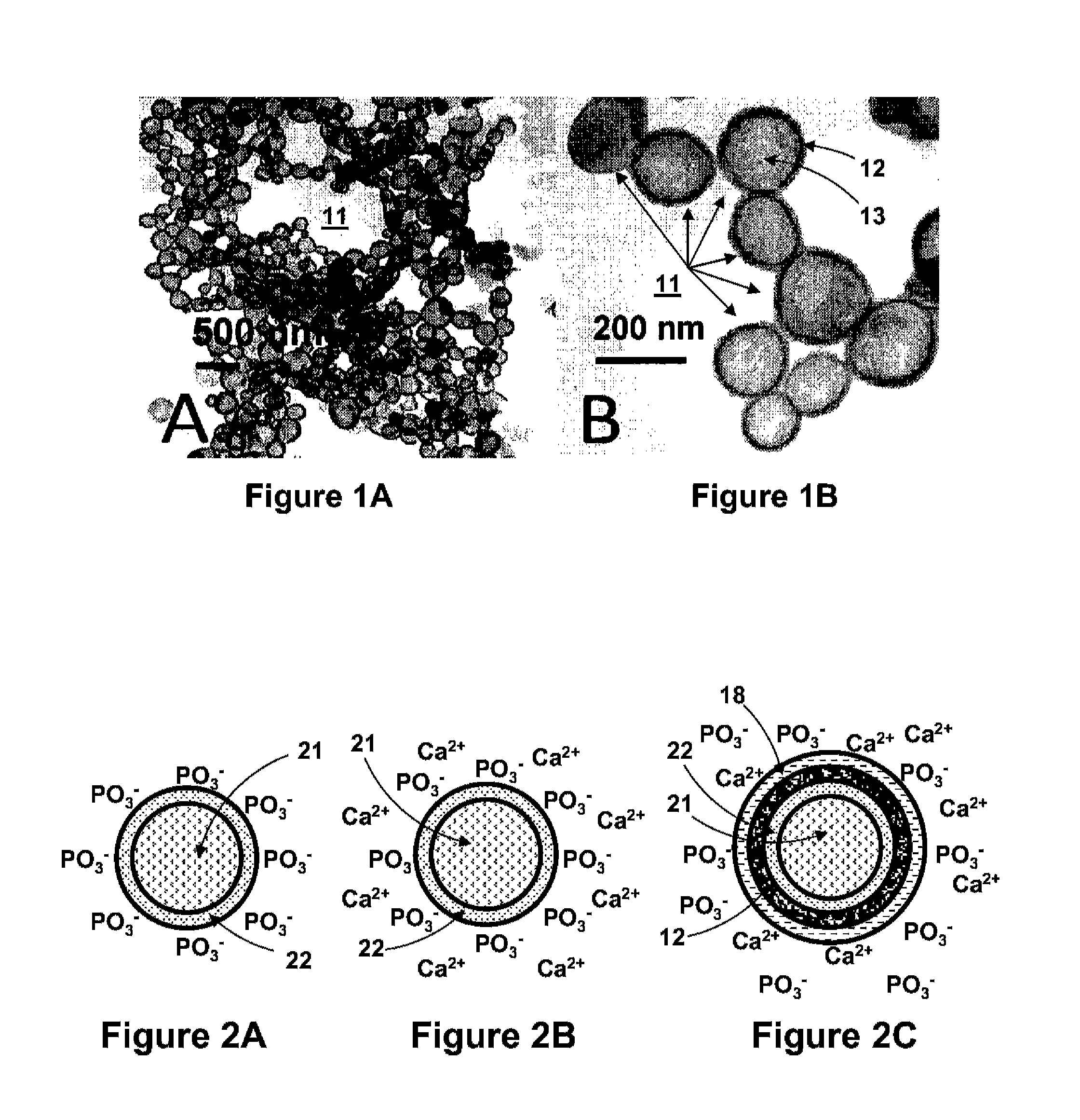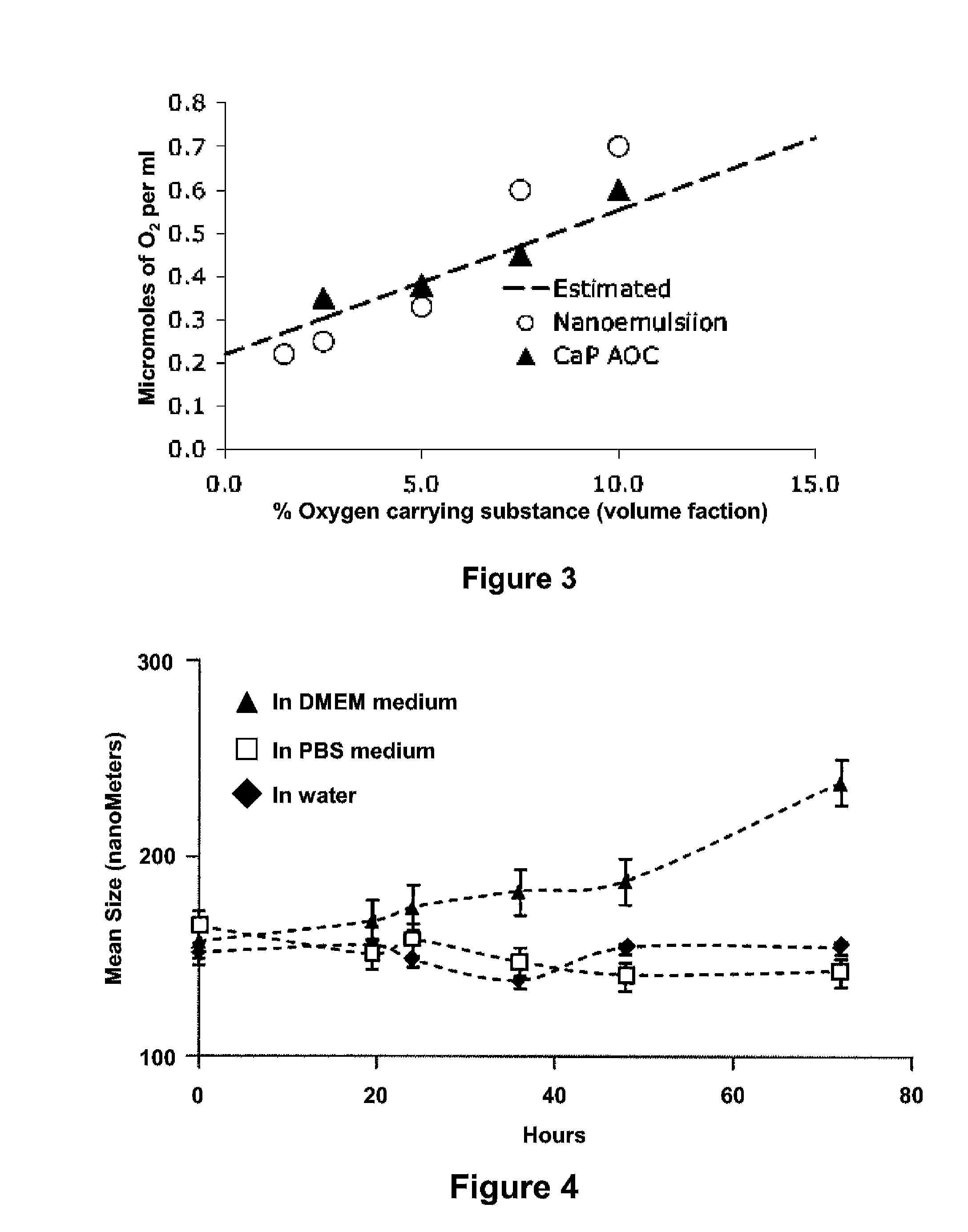Synthesis Of Oxygen Carrying, Turbulence Resistant, High Density Submicron Particulates
a technology of oxygen carrying and high density submicron particles, applied in the field of encapsulated active substances, can solve the problems of difficult disposal of particulate carriers with natural metabolism of patients, complicated function of real blood, and concerns about the supply, cost and safety of donated stored blood
- Summary
- Abstract
- Description
- Claims
- Application Information
AI Technical Summary
Benefits of technology
Problems solved by technology
Method used
Image
Examples
Embodiment Construction
[0046]Prior art uncoated nanoemulsion particles 13 have many drawbacks such as being too fragile and they unexpectedly and allow accidental release of active medicinal substances that may be toxic in unregulated doses in the body. The coated AOC nanoemulsion particles 11 of the present invention do not have this problem. To meet the criteria for artificial oxygen carriers (AOC) that can be temporarily substituted for blood, and for the retrievability of the AOCs 11 from blood, the AOCs described herein are particulates having shells 12 in accordance with the present invention. The AOC shells 12 must be submicron sized (50-1000 nm) hollow particles around a high density perfluorocarbon (PFC) emulsified nanoparticle. The reinforcing shell 12 is rigid and consists of a combination of lipids and inorganic materials like calcium phosphate, silicate, or biocompatible organic polymers such as, but not exclusively: polycaprolactone, polylactic acid, polyglycolic acid, polyethylene oxide, ch...
PUM
| Property | Measurement | Unit |
|---|---|---|
| temperatures | aaaaa | aaaaa |
| partial pressure | aaaaa | aaaaa |
| partial pressure | aaaaa | aaaaa |
Abstract
Description
Claims
Application Information
 Login to View More
Login to View More - R&D
- Intellectual Property
- Life Sciences
- Materials
- Tech Scout
- Unparalleled Data Quality
- Higher Quality Content
- 60% Fewer Hallucinations
Browse by: Latest US Patents, China's latest patents, Technical Efficacy Thesaurus, Application Domain, Technology Topic, Popular Technical Reports.
© 2025 PatSnap. All rights reserved.Legal|Privacy policy|Modern Slavery Act Transparency Statement|Sitemap|About US| Contact US: help@patsnap.com



